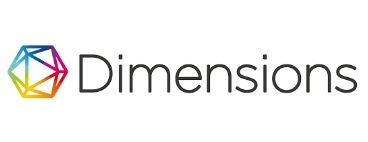ANALISIS PENGGUNAAN DAN BIAYA LANGSUNG OBAT ANTIDIABETIKUM PADA PASIEN RUJUK BALIK DIABETES MELLITUS TIPE 2 DI KLINIK MITRA SEHAT
DIRECT USAGE AND COST ANALYSIS OF ANTIDIABETIC DRUG IN REFERRAL TYPE 2 DIABETES MELLITUS PATIENTS AT MITRA SEHAT CLINIC
Abstract
Background: An increase in the number of type 2 Diabetes Melli
tus (DM) patients at Mitra Sehat Clinic in 2018 as much as 200%
compared to 2014. This has resulted in an increase in laboratory
and drug claims to BPJS as the insurance agency. Analysis of drug use in patients with type 2 DM provides useful information regarding
the management of antidiabetic drug use to determine the direction of management policy in efforts to control quality and costs.
Objective: To analyse drug use and direct cost description of antidiabetic drugs at Mitra Sehat clinic using Prescribing Quality Indicator (PQI), for evaluation of the management of the patient referral program (PRB – PROLANIS) Type 2 Diabetes Mellitus.
Methods: This study used a cross-sectional method with purposive sampling as a sampling technique. Subject inclusion criteria were PRB-PROLANIS patients with a single diagnosis of type 2 DM at Mitra Sehat Clinic aged 18 – 78 years who had an HbA1C examination, with a sample of 54 respondents.
Results: The results of the statistical correlation test showed that there was a relationship between the use of antidiabetic drugs using the four PQI indicators with HbA1C (p value<0.05). There is the effectiveness of using antidiabetic drugs on the first, second, and fourth PQI indicators. Meanwhile, the use of antidiabetic drugs with the third indicator showed ineffectiveness. The use of antidiabetic drugs that has the highest direct cost is the use of the biguanide group, which is 43 respondents as much as Rp. 72,870,020, while the average total direct cost is the most expensive class of insulin.
Conclusion: The use of antidiabetic drugs with PQI indicators can reduce HbA1C. Patients who received either insulin alone or insulin in combination did not achieve the target of therapy. The average total direct cost of the most expensive patients is those who use insulin drugs or a combination of insulin with other oral drugs.
Copyright (c) 2019 Ade Triana Hapsari, Erna Kristin

This work is licensed under a Creative Commons Attribution-NonCommercial-ShareAlike 4.0 International License.




